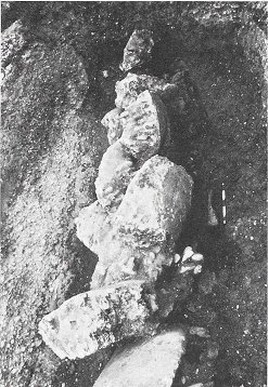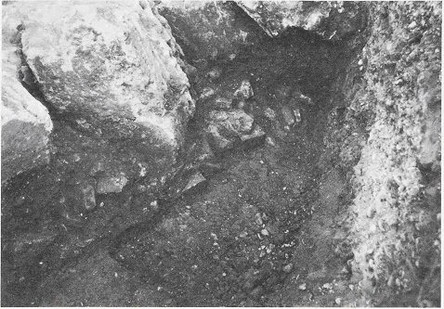Roman Empire Aqueduct - La Chiesa e località di San Giorgio in San Polo di Piave
Menu principale:
- Italiano
- English
Roman Empire Aqueduct
THE ROMAN AQUEDUCTS OF SAN GIORGIO
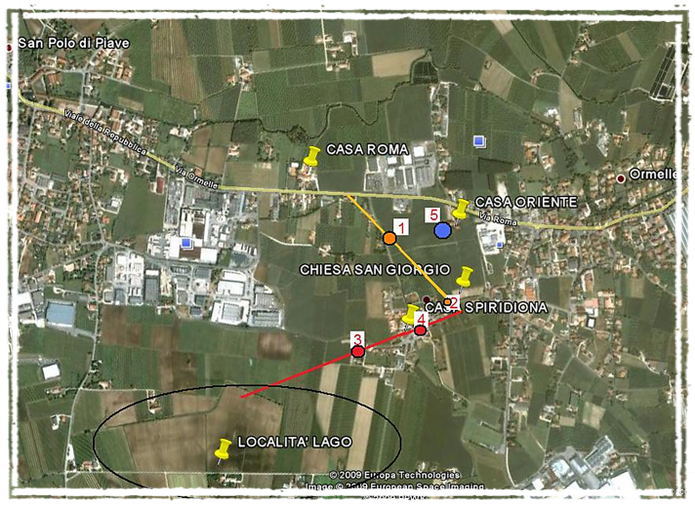
Map showing direction of aqueducts found.
THE FIRST FINDED AQUEDUCT
|
|
|
|||
|
|
|
|||
|
|
||||
The two photos represent the first aqueduct found in step 1 of the map.
THE SECOND ONE
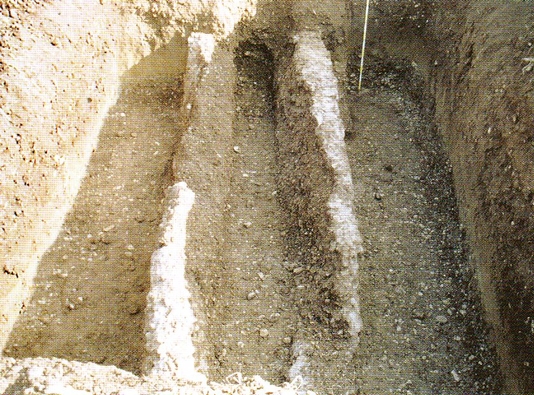
Aqueduct shaped channel found in step 3.
The second type of aqueduct found, looks instead to a channel, and was found only in section 3 of the map.
It started with a good chance from "Località Lago" (means "lake land"), where in the past there was a small basin of water. This water is directed to place a yard in front of Casa Spiridona, where there are traces of the presence of two circular tanks, one large and one smaller inside the first. It is capable of settling tanks of water, which was more dirty than that of water coming from Lia.
From these tanks started another underground aqueduct, probably went in one larger pipeline, with the first one, which could carry the water to Oderzo (Opitergium called by the Romans), in a particular time of water shortages of the town.
Part of the aqueducts, as is clearly visible in the first finding, were demolished in recent times, most likely after the first world war, there are a large crisis, agreed to go to the pipeline, destroy it and remove the stones to rebuild houses bombed. Remain in the underground sections of the vault which was not re-usable material in construction, which was discarded and left in the subsoil.
OTHER ROMAN REST IN SAN GIORGIO
Another interesting archeo-site in San Giorgio is the soil near Casa Oriente (5), here were found many objects: brick, mosaic tiles, the remains of amphorae and terra cotta pipes, etc.. Very probably this was the place of a Roman residence, maybe dating back to the second century AD, in which there were some rooms paved with mosaic.
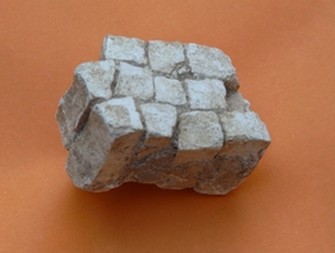
Photos of a small collection of mosaics found in soils near East.

